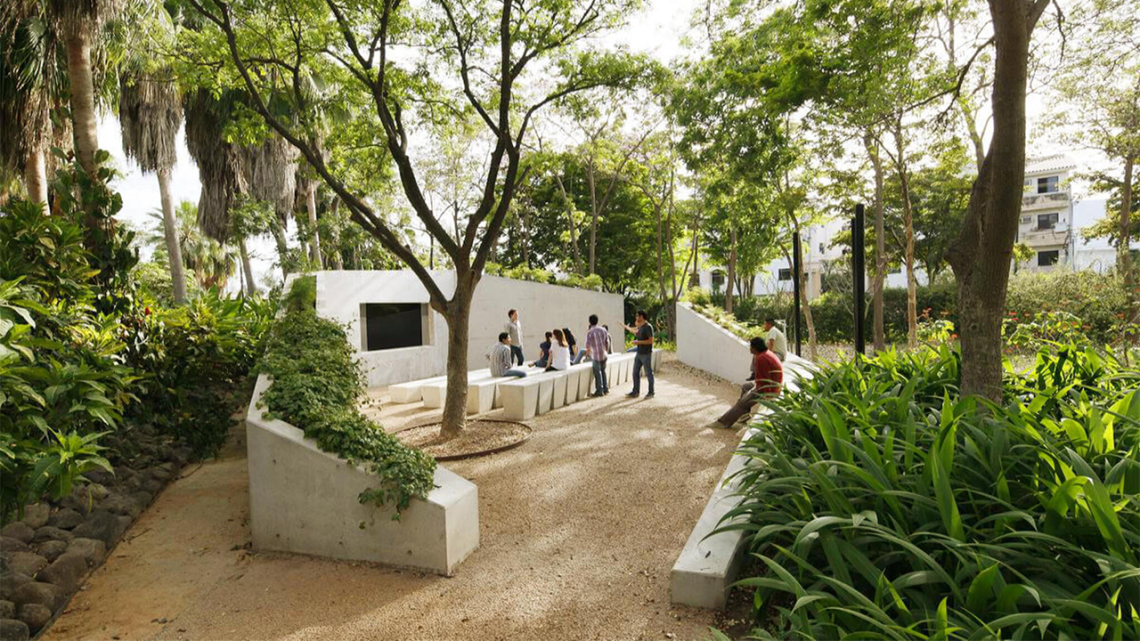
Revitalization of the Botanical Garden in the city of Culiacán, Mexico, a multi-stage project Bilbao's office has been involved with since 2004.
News directly from Cornell's colleges and centers
Tatiana Bilbao: architecture as a primary form of care
By Molly Sheridan
This year's L. Michael Goldsmith Lecture returns to New York City on April 19 and will be given by Mexico City-based architect Tatiana Bilbao. In advance of the event, Bilbao shares insight into her approach to design and the priorities that drive her practice.
"When I graduated from school, I thought I'd learned nothing. I really thought I had no capacity to design anything for anybody else," confesses internationally recognized architect Tatiana Bilbao. "But I soon realized that it was more that I didn't believe in the principles I was taught. So, I started searching for my own tools, my own ways." Bilbao, who established the award-winning firm Tatiana Bilbao Estudio in 2004, has since firmly found her footing, building a practice around collaboration and social values across projects ranging from affordable housing to museums and botanic gardens.
On April 19, at the Cornell Tech campus in New York City, Bilbao will deliver a talk titled "The New Necessary Landscape: The Social One," this year's L. Michael Goldsmith Lecture, during which she will share the philosophies that underpin her work.
"I see architecture as a primary form of care," she explains. "I design by putting humans in the center and caring about them. Spaces need to not only have the capacity to protect our bodies, but to inspire our lives. We definitely use geometry or composition or proportion as tools, but we design for and with people."
The revitalization of the Botanical Garden in Culiacán, Mexico, a long-term multi-stage project that has been ongoing since 2004, is an illustrative case in point. Initially, the team considered constructing a large pavilion. However, after observing the community's activities, they shifted their approach and instead proposed smaller, more flexible interventions that better reflected the existing use of the space. "If we tried to create things that would direct what happens here, we would be working against how the garden was used. That's when we decided to provide spaces that would enhance what already happened there. We started intervening in very small spots, doing pavilions that would generate different possibilities for different activities, and with the same kind of intuitive, improvised quality of what was already happening."
Continue reading on the Architecture, Art, and Planning website.
Media Contact
Get Cornell news delivered right to your inbox.
Subscribe
